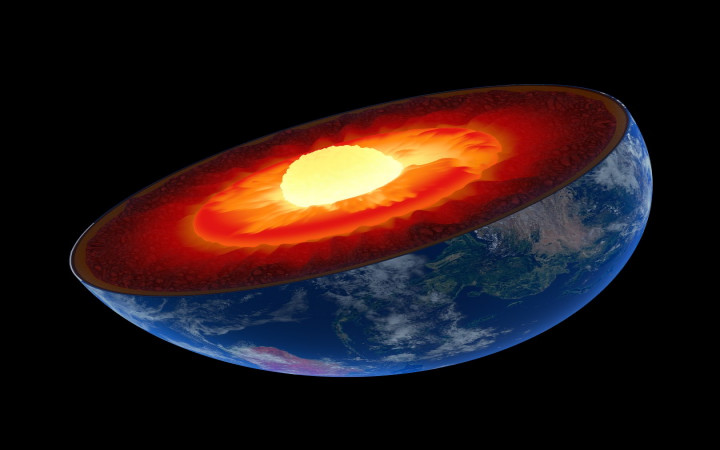What's beneath your feet right now? Carpet? Tile? A concrete sidewalk? Grass, dirt, and leaves? No matter what you're standing on right now, you're standing at the tip of the iceberg, so to speak. Whether you realize it or not, there are thousands of miles of Earth below your feet made up of all sorts of materials, including soil, rock, rivers of water, volcanic lava, and solid iron to name just a few.
If you've ever dug a hole in your backyard, you know that digging can be a lot of work. It can be fun, though, to see what lies below the surface. Your hole probably consisted mainly of dirt and possibly a few rocks along the way.
The deeper you dig, the harder it is to see to the bottom of the hole you're digging. Unless you climb down into the hole, it also gets harder to dig the deeper you go. That's why people who dig holes for a living, such as coal mines and water wells, use specialized equipment that allows them to dig really deep holes.
Even the deepest coal mines and water wells, though, barely scratch the surface of what lies beneath Earth's outer layer, called the crust. Below the crust lies the mantle, which is semi-solid and consists of rock and magma that moves about.
Below the mantle, you'll find Earth's core, which is made up of two parts. There is a liquid outer core that surrounds a solid inner core. Scientists believe the solid inner core is a solid ball of iron and nickel that's under a lot of pressure. How much pressure? Try about 9 million times the atmospheric pressure humans experience at sea level on Earth's surface.
All that pressure keeps the metal in the inner core in solid form, despite its extremely high temperature. Recent scientific studies lead experts to believe that Earth's inner core is approximately 10,800º F — or about the same temperature as the surface of the Sun!
But how do scientists know how hot Earth's core is? They can't see it. They can't dig down deep enough to use a thermometer to measure its temperature. Despite the fact it's right under our feet, Earth's core is maddeningly inaccessible.
Earth's core is about the size of Pluto. Given the thousands of miles of rock and other materials that separate those of us on the surface from the core, it might as well be as far away as Pluto! How can we really know anything about it?
Modern scientists have come up with ingenious ways to study Earth's layers. Geologists, for example, have long used seismic waves to learn about what lies below Earth's surface. Seismic waves are the types of waves produced by earthquakes and other tectonic plate movements that occur below Earth's surface.
By measuring seismic waves, scientists can learn a lot about the composition of Earth's subsurface layers. Because the layers are made up of different materials that vary in thickness, researchers are able to analyze the ways in which seismic waves bounce off the boundaries between various layers. Seismic waves travel through rock in much the same way that sound waves travel through air.
As for Earth's core, scientists believe it's made mostly of iron because of the magnetic field that exists around Earth. Using advanced technology, scientists have been able to pinpoint with greater specificity the exact melting point of iron, which allows them to make educated guesses about the temperatures that must exist in Earth's inner and outer cores.




